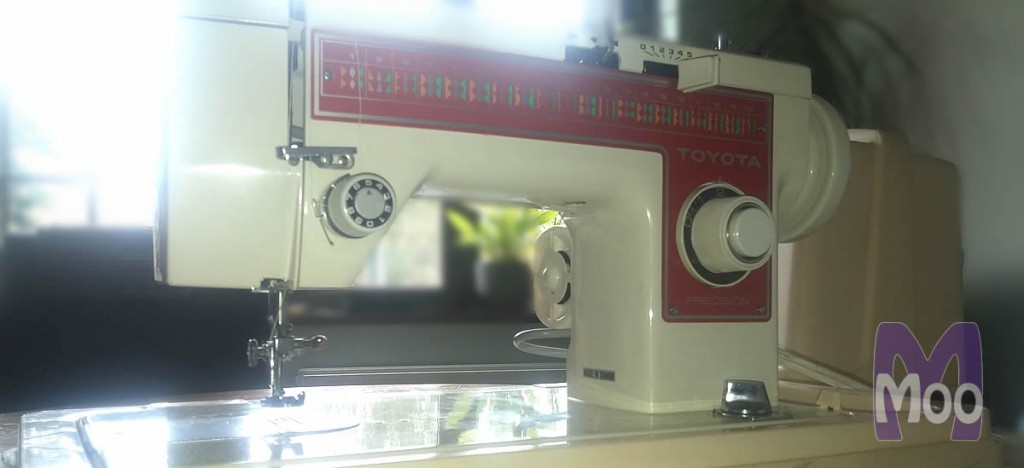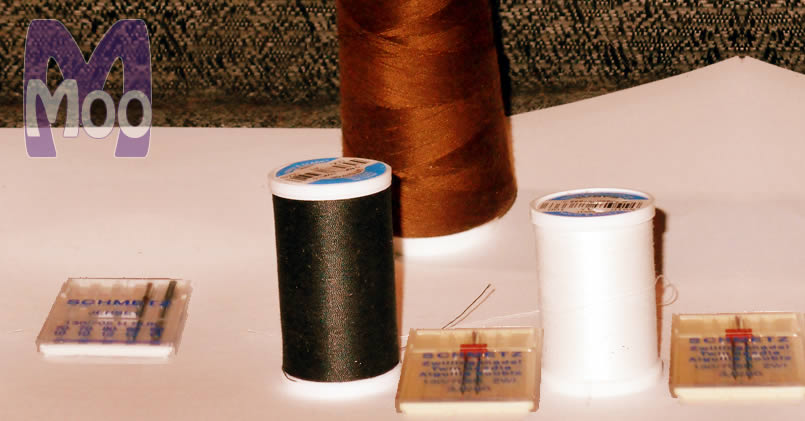Sewing requires, at minimum, a needle and thread. Your sewing machine is capable of producing quality stitches when you match the needle and thread to your project.
A good choice offers smooth sewing with proper tension. A bad choice could mean skipped stitches and damaged fabric. Fortunately, it is easy to make good choices.
Sewing on Woven Fabrics
Woven fabrics do not stretch and vary from fine batistes to heavy denim and upholstery fabrics. Use a sharp needle, sometimes called a denim needle. Choose smaller needles for finer fabrics and larger needles for thicker fabrics or multiple layers of fabric, such as sewing patch pockets on jackets.
Heavy-duty needles are available for firmly woven home decorating and outdoor fabrics. For heirloom sewing on fine batiste, there are double needles with two needles attached to a single shaft. Double needles are threaded with two spools of thread and used to stitch parallel lines for creating pin tucks. A wider double needle is made for decorative topstitching on jeans and other heavier fabrics.
All-purpose thread is good for most general sewing. Cotton-covered polyester core thread and high quality 100% polyester thread are both good choices. If you use a serger (overlock machine) be sure to use special cone thread–it is manufactured for high speed sewing without tangling and knotting. Nylon utility thread is strong and suitable for outdoor uses, such as rucksacks or sports bags. “Invisible” thread is a special clear monofilament thread made for stitching blind hems.

Sewing on Knit Fabrics
Knits with some body and moderate stretch, such as double knits, can be sewn with a universal needle. These needles come in a variety of sizes, like sharps, but have a slightly blunted needle to avoid snagging knit fabrics.
Lightweight knits or knits with lots of stretch, such as swimwear fabric and tricot lingerie fabrics, need a stretch needle, sometimes called a jersey needle. If you try a universal needle and get skipped stitches, switch to a stretch needle. The rounded tip on the stretch needle glides between the threads of stretchy knits to properly catch the bobbin (bottom) thread.
As with woven fabrics, use thread appropriate to the weight of your fabric. Bulky knits may require a heavier thread, although most knits used for garments will be fine with all-purpose thread. Be sure to stretch the fabric gently as you sew or use a stretch stitch setting on your sewing machine. You want your seams to stretch with the fabric when the finished project is worn.
Special Needles and Thread
Embroidery needles have a larger eye to allow for heavier decorative threads to be used in the machine. Rayon embroidery thread is shiny compared to cotton or polyester thread, and makes decorative stitches stand out.
Metallic threads are also available on spools for the home sewing machine. Use less expensive all-purpose thread or bobbin thread in the bobbin to save the pretty embroidery thread for the right side of the fabric.
Quilting needles are made to penetrate thick layers of fabric and batting (wadding) like quilts and quilted outerwear. Try a quilting needle with heavy coat fabrics, too. You may use machine quilting thread, but do not mistakenly use hand quilting thread—it has a wax finish that is not suited for sewing machines.
One More Tip
If you choose the right thread and needle, yet still have problems, try unthreading and rethreading the machine. Even professionals sometimes make a mistake!







